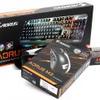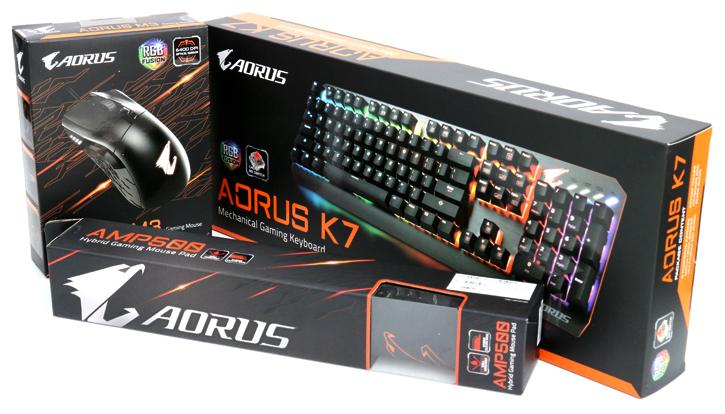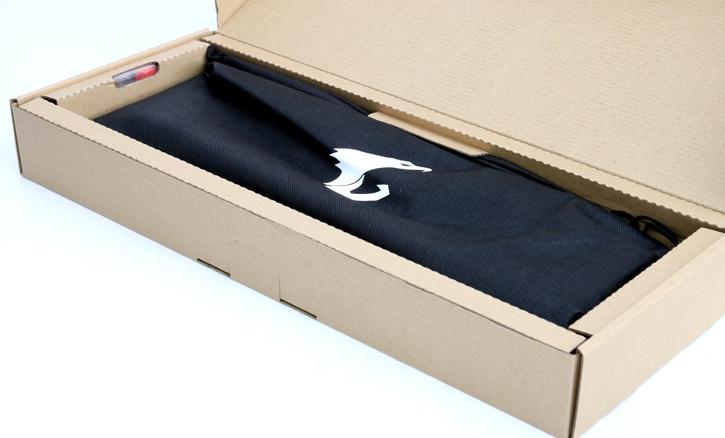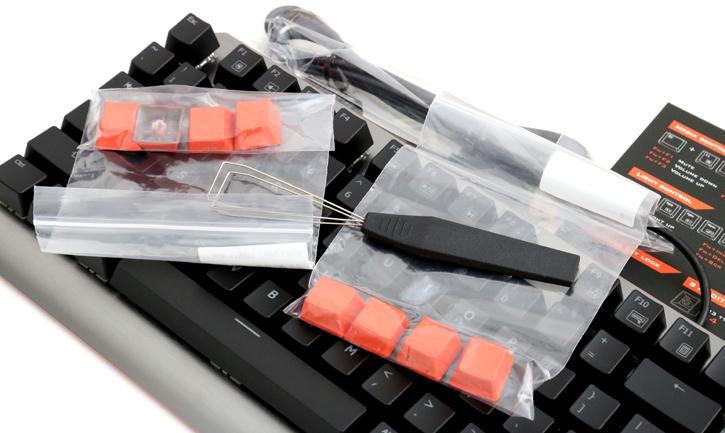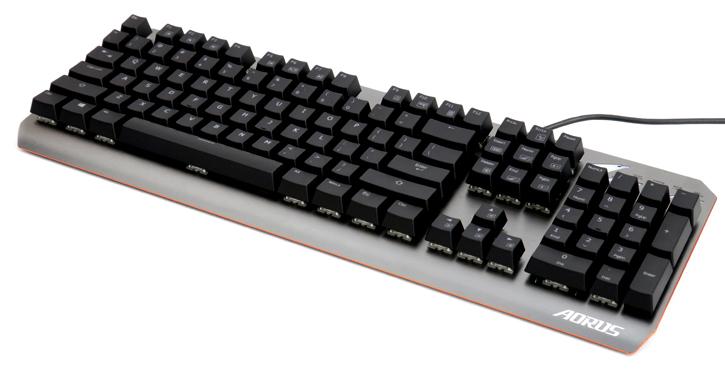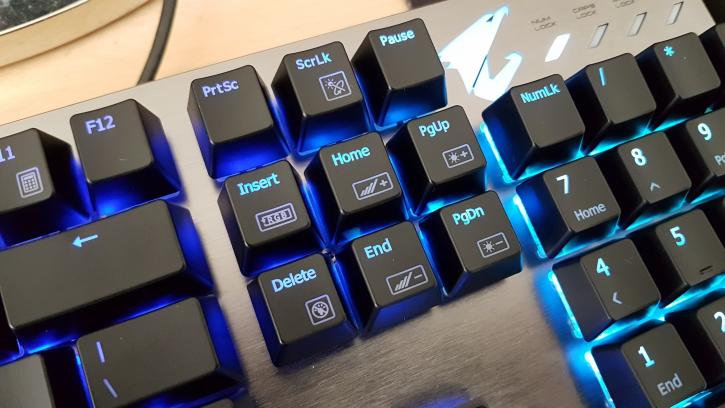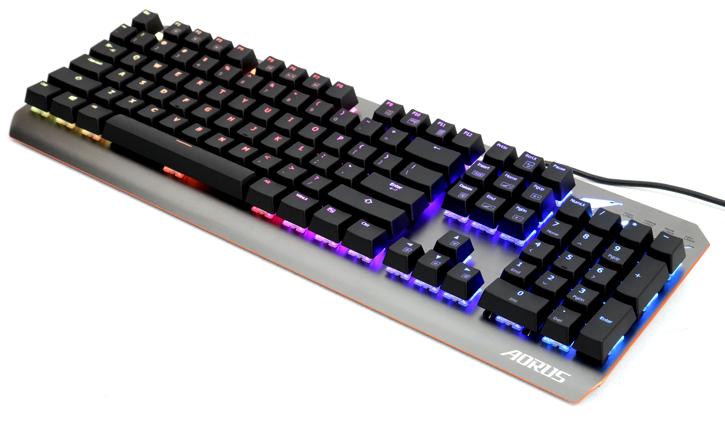Product Gallery K7
Product Showcase
Alright, we're going to have a closer look at the product guided with the help of lots of photos. We'll start off with the Aorus K7 keyboard and, as always, packaging and bundle first. The K7 includes Cherry MX Red RGB key switches and offers features like 1000Hz polling, full-key rollover over USB and anti-ghosting.
Obviously the packaging has changed to suit the latest line of Aorus gaming products, the keyboard has been packaged in a bag when you open up the box, Gigabyte threw in some extras.
You'll also receive some extra key caps and key-cap remover. Very awkward though, the key-caps are unmarked, e.g. do not have any letters or numbers on them. No clue as to why that is really.
Unpacking shows a simple bundle, the keyboard, the manual/warranty guide and a 1.7 meter cloth/rubber based cable alongside the extra keycaps and keycap puller. The primary fit for this keyboard I guess would be FPS gaming, but it is well suited enough for any gaming and generic usage.
After you power it, across the keyboard you will notice RGB back-lights, these can be dimmed and animated stright from a key-combo on your keyboard. We'll show you the keyboard powered on over the next few pages of course. Once we have a better and closer look at the keyboard the words 'nice looking' and 'sturdy' come to mind. The keyboard has a nice heavy feel, combined with the grey/dark design, as simple as it is, it just looks great. Zooming in on the keys, the keys themselves are not rugged but have a smooth feel to them when used. The keys all seem to have a UV coating that prevents the letters from being washed out anytime soon.
There is a Windows lock mode key hidden under one of the optional keys, which allows you to disable the Windows key to avoid getting dropped back to the desktop by accident in a hefty gaming session.
These functions are all supported by default, there's no need to install any software whatsoever. You can change the animation system, multimedia keys and some other cool stuff. Obviously it can all be managed by Aorus suite software as well.
Due to the simplistic design you'll miss separated media function keys like a volume knob on the keyboard, albeit they have been embedded under the function keys. But sure, that requires a key-combo to get going.
